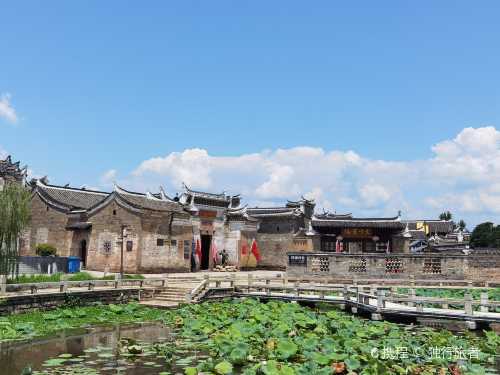App
Customer Support
NZD
Find Bookings
Popular Trip Moments
Come to Yaoxi to admire the lotus flowers, and embrace the romance of summer... | Luo Family Ancient Village, Guangchang, Jiangxi Province. | The former site of the Red Ninth Army Command in Luojiapu, Guangchang, Jiangxi. | Wenfeng Academy in Raojiabao, Guangchang, Jiangxi. | Encounter the lotus feast in Guangchang, Fuzhou. | These three ancient villages in Guangchang are worth a visit | Known as the Guinness World Record holder - Yaoxi Village | The ancient town of Lotus in front of the post station | Guangchang, the first lotus village in China
Recommended Attractions at Popular Destinations
Bangkok attraction near me | Manila attraction near me | Tokyo attraction near me | Taipei attraction near me | Hong Kong attraction near me | Seoul attraction near me | Kuala Lumpur attraction near me | Los Angeles attraction near me | Shanghai attraction near me | New York attraction near me | Shenzhen attraction near me | Osaka attraction near me | Singapore attraction near me | London attraction near me | Guangzhou attraction near me | San Francisco attraction near me | Beijing attraction near me | Macau attraction near me | Bali attraction near me | Jakarta attraction near me | Paris attraction near me | Ho Chi Minh City attraction near me | Istanbul attraction near me | Phuket attraction near me | Chicago attraction near me | Seattle attraction near me | Toronto attraction near me | Orlando attraction near me | Cebu attraction near me | Chiang Mai attraction near me
Popular Attractions
Chen Clan Ancestral Hall | Huangpu Park | Great Mosque | Skyline Rotorua | Juyongguan Great Wall | Emperor Qinshihuang's Mausoleum Site Museum | Chongqing Changjiang Cableway | Guangdong Museum | China Science and Technology Museum | XITANG HISTORIC TOWN OF CHINA | Lido Cinema - Borella | Dong Ao Island | Xiguan Yongqingfang Tourist Area | Auckland Botanic Gardens | Coconut Dream Corridor | Sands SkyPark | Zhijin Grand Canyon | Aranya | Wumeng Grass Plain | Jinfang Forest Spa Resort & Hotel | Tuassieres | Narawa Royal Golf | Xylite Park Rink | Sai Baba Temple | Kapliczka przy szlaku | Croton Point Picnic Area 1 | Giardino ex Farmitalia | Travel Agrowidya Ornamental Plants | West Woods | Barjac
Popular Restaurants in Guangchang
何爹浏阳蒸菜(广昌店) | 台湾煲仔饭 | 绝味鸭脖(广昌建设西路店) | 乡之味土菜馆(光耀现代城店) | 澳门豆捞(抚州店) | Dakoujiu Milk Tea | 翡翠洲际酒店-中餐厅 | 天下第一粉八哥重庆酸辣粉(怡和花园店) | 人气正新鸡排 | 德克士(广昌翡翠店) | Huangshanghuangjianglujia | 酷尔爽欧式奶茶铺 | 正新鸡排·炸鸡烧烤(远昌店) | 味美滋旗舰店 | SN成都老火锅(解放南路店) | 罗蒂蛋糕 | 万豪酒楼(文渊路店) | 麦香园(向阳新城店) | 春风园酒家 | 美客基(抚州广昌店) | 阳光鲜奶 | 鸿运酒家(子暄北路店) | 大台北(西沿河路店) | 重庆刘一手火锅(广昌店) | 邱芳粉店(广昌店) | 8090鲜萃茶 | 抚州特色早点 | 蜜雪冰城(日新超市店) | 爱上披萨(广昌店) | 小食候湘(广昌店)
Popular Ranked Lists
Top 3 Best Things to Do in Yuyao | Popular Premium Hotels Near Dearborn | Top 10 Local Restaurants in Calgary | Top 9 Best Things to Do in Liangshan Prefecture | Top 7 Luxury Hotels in Galle | Top 10 Best Things to Do in Rongcheng | Top 8 Luxury Hotels in Hurghada | Popular Luxury Hotels in Dhofar | Top 10 Local Restaurants in Quito | Popular Luxury Hotels in Wilaya de Fes | Top 3 Luxury Hotels in Almaty | Top 18 Local Restaurants in Dunhuang | Popular Best Things to Do in Puge | Top 20 Local Restaurants in Nanchang | Top 3 Best Things to Do in Shuozhou | Top 10 Local Restaurants in Honolulu | Popular Luxury Hotels Near Thermi | Top 3 Best Things to Do in Dazhou | Popular Best Things to Do in Qingchuan | Popular Luxury Hotels in Al Ula | Popular Luxury Hotels in Mirbat | Popular Luxury Hotels Near Varberg | Top 10 Local Restaurants in Cancun | Top 10 Local Restaurants in Adelaide | Top 5 Best Things to Do in Jingxi | Popular Best Things to Do in Gongcheng | Popular Best Things to Do in Yongshun | Top 19 Local Restaurants in Beihai | Top 5 Best Things to Do in Zhaotong | Top 19 Local Restaurants in Haikou
Payment Methods
Our Partners
Copyright © 2025 Trip.com Travel Singapore Pte. Ltd. All rights reserved
Site Operator: Trip.com Travel Singapore Pte. Ltd.
Site Operator: Trip.com Travel Singapore Pte. Ltd.

























